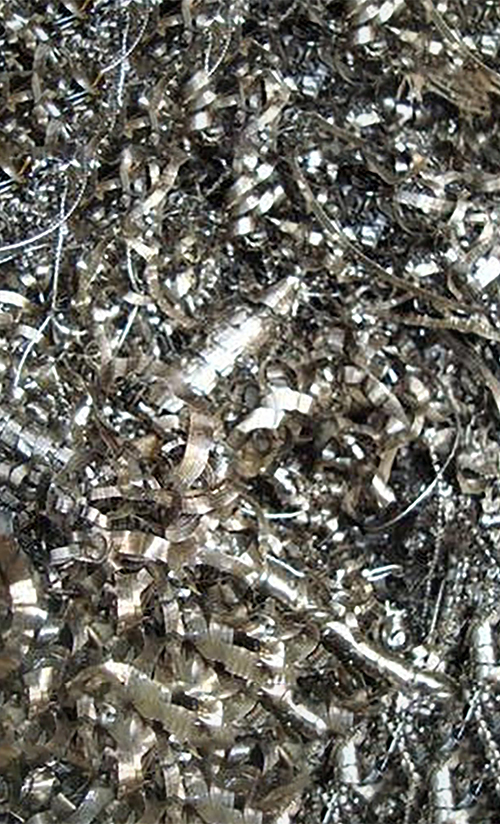Titanium
Titanium – Properties, Recycling, and Scrub Overview
Titanium is a lightweight, high-strength metal known for its exceptional corrosion resistance, especially against salt water and chemicals. With a silver-gray appearance and high melting point, titanium is widely used in aerospace, medical implants, marine engineering, power generation, and advanced manufacturing. Though more expensive than other metals, its strength-to-weight ratio and biocompatibility make it indispensable in critical applications.
Key Properties of Titanium
- High Strength, Low Weight – About 45% lighter than steel but just as strong.
- Corrosion Resistance – Forms a protective oxide layer that resists rust, acids, and seawater.
- Biocompatibility – Non-toxic and non-reactive with body tissues, making it ideal for implants.
- High Melting Point – Around 1,668°C, suitable for high-temperature applications.
- Non-Magnetic & Non-Toxic – Safe for medical and sensitive electronic applications.
Recycling of Titanium
Recycling titanium is economically and environmentally important, especially given the high cost and energy-intensive extraction process from its ore (rutile or ilmenite).
Titanium Recycling Process:
- Collection & Sorting
- Scrap is collected from machining operations, aerospace components, medical devices, and industrial offcuts.
- Sorted into high-grade (clean) and low-grade (contaminated) categories.
- Shredding & Cleaning
- Large pieces are cut or shredded; contaminants like oil, coatings, or other metals are removed.
- Melting & Refining
- Clean scrap is melted in vacuum arc remelting (VAR) or electron beam melting (EBM) furnaces to avoid contamination.
- Refined titanium is cast into new billets or bars.
- Reuse
- Recycled titanium is reused in aerospace, medical, defense, and automotive industries, often blended with virgin titanium to meet precise specifications.
Titanium Scrub
Titanium scrub refers to low-purity or contaminated titanium waste, which can include:
- Turnings and chips from machining (often oily or oxidized)
- Coated or bonded titanium parts
- Mixed alloy scrap or titanium with ferrous or nickel-based contaminants
- Burnt or heavily oxidized material
Scrub is more difficult to recycle due to contamination and reactivity at high temperatures. However, specialized facilities use:
- Degreasing and drying systems for oily turnings
- Inert atmosphere melting or vacuum processing to minimize oxygen contamination
- Chemical processes (e.g., Kroll process recycling residue) in large-scale operations
Conclusion
Titanium’s superior properties make it a critical metal in advanced industries. Recycling titanium—including scrub material—not only reduces costs and conserves resources but also supports environmentally responsible manufacturing. As global demand increases, efficient recycling systems will be essential to maintain supply and promote sustainable growth in high-tech sectors.
